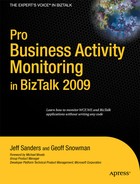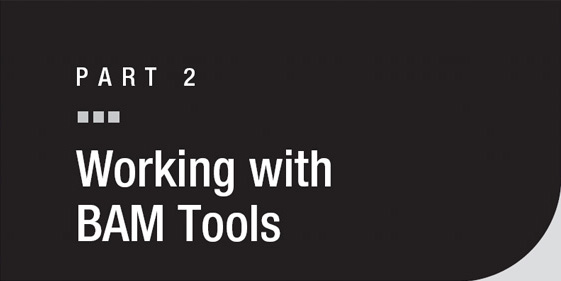In Part 2, you will learn how to work with the BAM tools. Each of the chapters in this part builds on concepts and ideas that you learned in Part 1.
There are three major parts to any BAM solution: event definition, event processing, and event consumption.
Chapter 5, focused on defining events, describes more advanced concepts in activities and views, and centers on the business analyst tools: the BAM Add- In for Excel and the Orchestration Designer for Business Analysts (ODBA). You’ve already seen one simple example of an activity and a view in Chapter 3. BAM allows much richer views to be created that include aggregations and time- based measurements. As you go through Chapter 5, you’ll see several examples of creating BAM views to support specific roles in the organization.
Chapter 6, focused on event processing, describes the Tracking Profile Editor (TPE). This tool is used to select the data that is captured from BizTalk Messaging and BizTalk Orchestration. In Chapter 3, you also saw an example of capturing data from WCF. Unlike WCF, where building the interceptor configuration file requires editing XML by hand, the TPE allows data to be selected by a simple click-and-drag process, building the tracking profile for you.
Chapter 7, focused on event consumption, covers using the BAM Portal and Excel spreadsheets, and using data directly from the SQL Server databases. You’ve already taken a look at the BAM Portal in Chapter 3. In Chapter 7, you’ll see some more advanced options for consuming data.
By the end of Part 2, you will understand how to use the BAM tools to define, process, and consume events for your solution.

